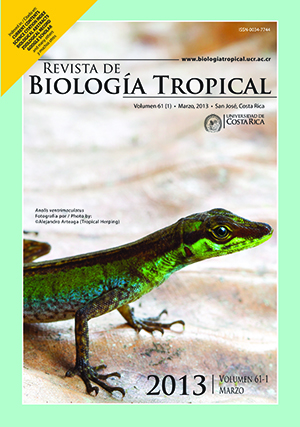Abstract
Bioacoustic of the advertisement call of Ceratophrys cranwelli (Anura: Ceratophryidae). The advertisement call plays an important role in the life history of anuran amphibians, mainly during the breeding season. Call features represent an important character to discriminate species, and sound emissions are very effective to assure or reinforce genetic incompatibility, especially in the case of sibling species. Since frogs are ectotherms, acoustic properties of their calls will vary with temperature. In this study, we described the advertisement call of C. cranwelli, quantifying the temperature effect on its components. The acoustic emissions were recorded during 2007 using a DAT record Sony™ TCD-100 with stereo microphone ECM-MS907 Sony™ and tape TDK™ DAT-RGX 60. As males emit their calls floating in temporary ponds, water temperatures were registered after recording the advertisement calls with a digital thermometer TES 1 300±0.1°C. Altogether, 54 calls from 18 males were analyzed. The temporal variables of each advertisement call were measured using oscillograms and sonograms and the analyses of dominant frequency were performed using a spectrogram. Multiple correlation analysis was used to identify the temperature-dependent acoustic variables and the temperature effect on these variables was quantified using linear regression models. The advertisement call of C. cranwelli consists of a single pulse group. Call duration, Pulse duration and Pulse interval decreased with the temperature, whereas the Pulse rate increased with temperature. The temperature-dependent variables were standardized at 25°C according to the linear regression model obtained. The acoustic variables that were correlated with the temperature are the variables which emissions depend on laryngeal muscles and the temperature constraints the contractile properties of muscles. Our results indicated that temperature explains an important fraction of the variability in some acoustic variables (79% in the Pulse rate), and demonstrated the importance of considering the effect of temperature in acoustic components. The results suggest that acoustic variables show geographic variation to compare data with previous works.##plugins.facebook.comentarios##
Downloads
Download data is not yet available.






